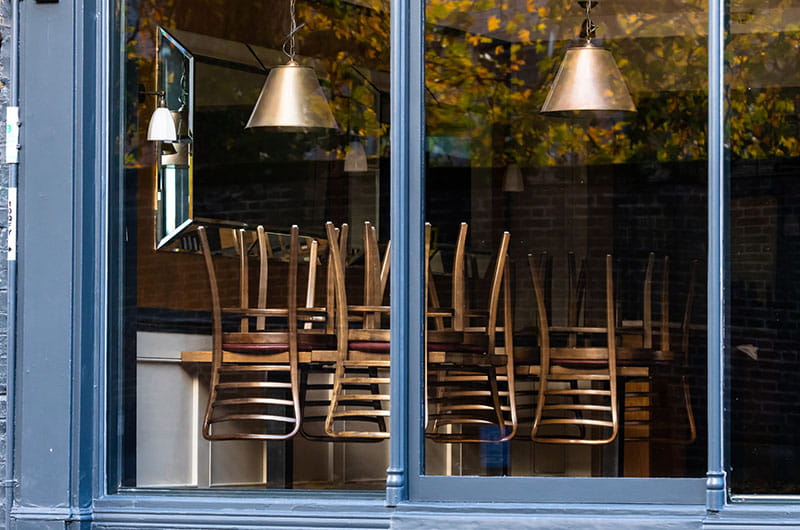
Closing indoor dining during the first two waves of the pandemic was associated with a 61% decline in new COVID-19 cases over a six-week span, preventing an estimated 142 daily cases per city, compared with cities that reopened indoor dining during that period, according to recently published data from experts at the Dornsife School of Public Health. The team looked at data from March to October 2020 in 11 U.S. cities, including Philadelphia, Atlanta and Dallas. The results were published last month in the journal Epidemiology.
The authors are not suggesting that any specific U.S. cities should close indoor dining at this time but suggest it could be a tool worth employing down the road – in addition to social distancing, improved ventilation, vaccination and other measures – to curb the spread of new variants around the globe.
“This clear association between indoor dining and COVID infections can help inform policies that limit indoor dining to slow the transmission of this disease,” said study lead author Alina S. Schnake-Mahl, ScD, a postdoctoral research fellow at the Dornsife School of Public Health’s Urban Health Collaborative. “We must learn from what worked in the early months of the pandemic, especially with the Omicron variant now in the United States and Delta rapidly causing more COVID-19 cases in countries around the globe.”
The Drexel study is among the first to isolate the role of indoor dining in transmission of this coronavirus. This contrasts with previous studies on “on-premises” dining (that included both indoor and outdoor dining together and COVID).
“Reducing transmission is key to saving lives and preventing serious illness, and of course helps prevent long -term financial and social costs,” said Schnake-Mahl. “Effective policy must be met with a public willing to work together and help us all get through this time and build stronger, more innovative cities for this and the next public health crisis.”
Philadelphia’s City Council passed a bill this month that aims to help those in Philadelphia dine out at less risk – by making outdoor dining structures indefinite fixtures in some areas of the city.
The street-based three-walled boxes that hug the sidewalk in front of many of center city’s popular restaurants, often replete with hanging flowers, strong lights and heat lamps or fans – are one of the more publicly noticeable innovations by the restaurant industry to help keep businesses open during the pandemic and allow diners to feel more comfortable dining out during more months of the year.
Indoor dining may also contribute to racial disparities in coronavirus cases, as higher rates of occupational exposure are experienced disproportionately by Black and Hispanic populations working in those settings, researchers say.
“Our data suggests that closing indoor dining can help prevent transmission and may also send a message to the broader public about the severity of the pandemic,” said senior author Usama Bilal, PhD, MD, an assistant professor in the Dornsife School of Public Health. “It might also encourage other policies and regulations aimed at ensuring social distancing and improving indoor air ventilation and filtration that we know can help reduce transmission.”
The authors add that the challenge of protecting public health while preventing layoffs and restaurant closures is especially difficult considering this data, and the inherent limitations of the data available.
For example, the current study measures associations between cases and indoor dining policies, but it’s possible that opening indoor dining sent a message of reduced risk to city residents, thus leading to additional higher-risk behavior overall (such as not social distancing, not wearing masks in large indoor gatherings, etc.) in those cities. If future studies look at data pertaining to closing indoor dining from December-February, that might yield additional context as well.
Overall, the researchers report that closing indoor dining is not a substitute for other public health measures, such as masking and vaccination, but may be another way to help stem the spread of COVID-19 and prevent more widespread closures and lockdowns.
This research was supported by the National Institutes of Health and the Robert Wood Johnson Foundation.
In addition to Schnake-Mahl and Bilal, other others on this study include Gabriella O’Leary, Pricila H Mullachery, Vaishnavi Vaidya; Gabrielle Connor, Heather Rollins, Jennifer Kolker, and Ana V. Diez Roux of the Dornsife School of Public Health. The full study is available here: https://journals.lww.com/epidem/Abstract/9000/The_impact_of_keeping_indoor_dining_closed_on.98205.aspx.
In This Article
Contact
Drexel News is produced by
University Marketing and Communications.
